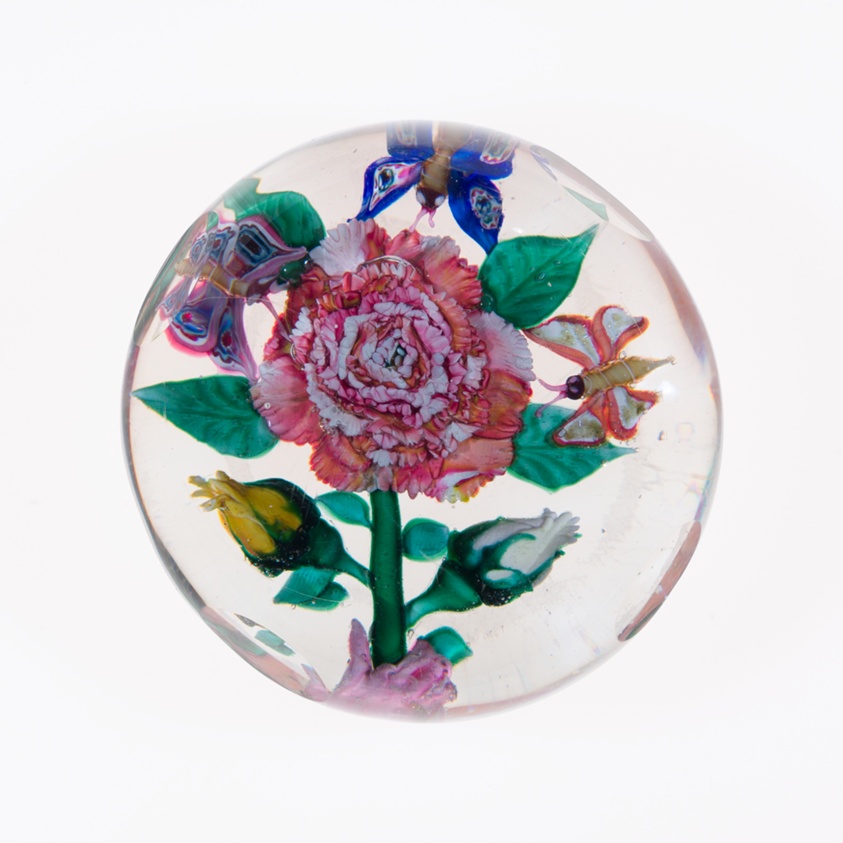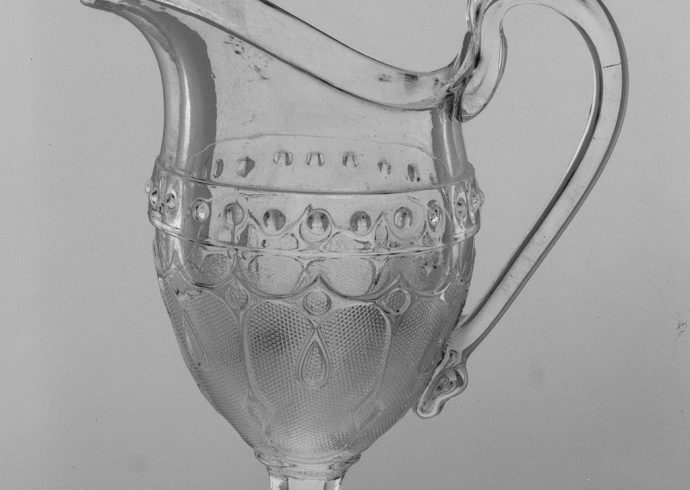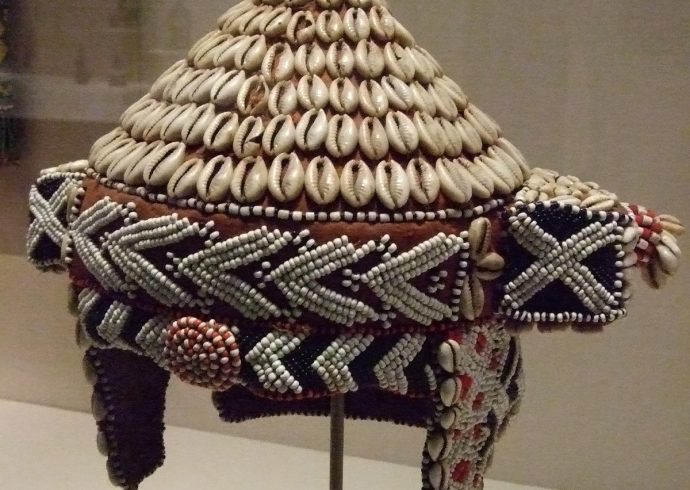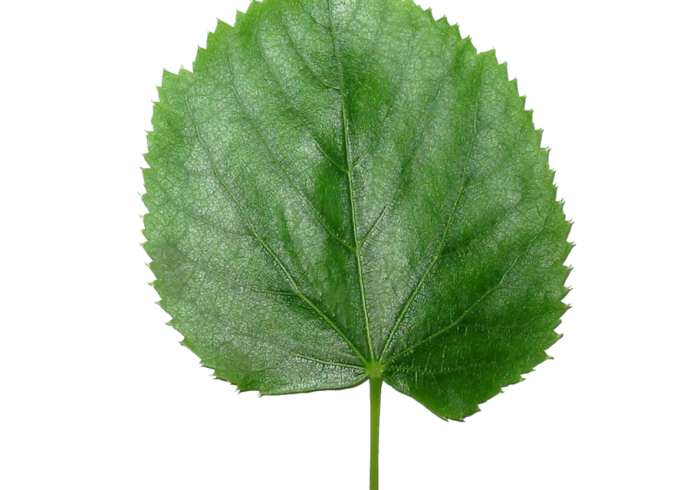
Collecting Mount Washington and Pairpont Paperweights
The Mount Washington Glass Company started in 1837, in South Boston, Massachusetts by Deming Jarves, a well known nineteenth century glass maker who started the Sandwich Glass Company. After the first factory was closed in 1869, it relocated to New Bedford. Mount Washington closed for a brief period before being reopened by Fred Shirley, a glass maker with innovative ideas. It was at Mount Washington where Shirley would create and patent what is known as Burmese glass, a beautiful two-tones glassware that was either decorated or left plain. In 1880 a small Britannia metal factory opened up near Mount Washington, Pairpont. Britannia is a metal alloy comprised of tin, copper, antimony, and zinc and was used for making metal ware in the nineteenth century. In 1894 the two companies merged and Pairpont purchased many of the glass molds and glass making procedures from Mount Washington.
Along with painted glass, Burmese glass, and decorative tableware, Mount Washington also created some beautiful paperweights that are now quite collectible. A few descriptions of these paperweights are below:
A paperweight has a large frilled rose of salmon pink, held by a woman’s hand with a gold ring on it. The rose has many leaves and small fruits located by the stem. Two butterflies are located above the rose. Flecks of gold are scattered throughout, making it appear similar to Sandwich glass.
Another paperweight has five strawberries, four white blossoms, and green leaves in lampwork against a clear base.
A paperweight has mottled rose petals of salmon pink color, blue-green leaves and stem, against a clear background.
A paperweight of magnum weight size has a life-sized rose in salmon pink with green leaves.
Pairpont
The Pairpont Company merged with 1880 after it bought out Mountain Washington, a glass company located next to them. The owner of Pairpont, Thomas J Pairpont, was born in London, England in 1838.
He completed an apprenticeship in silver in Paris, France and eventually moved to the United States in 1866. Making his home in Providence, Rhode Island, Pairpont worked as a glass designer for Gorham Company. Eventually he moved to Connecticut and worked in the same position at Meriden Britannia Company. By then, Pairpont was highly regarded as a silversmith throughout the nation. He was highly creative, designing many elaborate and extravagant silver sculptures. One of his creations is the Bajnotti Memorial Fountain which he made in 1899 and is standing in front of the city hall of Providence.
Just like Mount Washington, Pairpont used the highest quality materials in the making of their glassware. A “gray” type of cutting was involved in the making of glass, where the cuts were smoothed in the surface of the weight with a stone and omitting to polish these cuts to a transparent state.
Some glass was combined with metal, producing a beautiful contrast. Pairpont continued making paperweights, using the old Mount Washington designs and creating their own designs.
Pairpont used only the highest quality metal in their paperweights, providing it with a lead crystal appearance and brilliance. Many paperweights were not marked but those that were contained a P inside of a diamond. This trademark has been used since 1880. Pairpont created both millefiori and lampwork paperweights. The millefiori canes used had pinwheel, flower, and star designs in them. Two main colors used in their paperweights were cobalt blue and ruby red. Some paperweights were signed with the artist’s initials, such as PK for Philip Kiluk, and CB for Cynthia Bryden. A few descriptions of Pairpont paperweights are below:
One paperweight has a red and white spiral down the center, gray cut in the flower on top and at the base.
Another paperweight shows a cameo in the sulphide style of Robert E. Lee with a red, white, and blue spiral background.
A clear paperweight is made in the shape of a pear with tiny air bubbles throughout and has a red glass stem.
Another paperweight is in the pedestal style and has a rose in the center. The foot of the weight has a grape and leaf design with a P marked at the base.
Pairpont is still in business today as a glass manufacturer.
Image Credit: Paperweight, Late 19th century, Mount Washington Glass Co., American, 1837-1900. CC0 Public Domain Designation. Art Institute Chicago.


